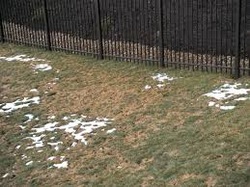
If you live in Amherst, Bedford, Merrimack, Hollis, Nashua, or any of the nicely landscaped towns in New Hampshire you know the pride we take in our lawns. The short growing season combined with the ridiculous winters makes growing a nice lawn a challenge. Many landscaping services repair lawns by scraping up 3 or 4 inches of your topsoil and replacing it with another 3 or 4 inches (sometimes less!,) then seeding it. While this may get you grass for a year or so it is horribly ineffective. Grasses need deep soil depths to put down deep roots. The roots are part of the complex system that feed the plants. Yes, the blades are very important as they provide the needed surface area for photosynthesis, but the roots are where it receives the moisture and nutrients.
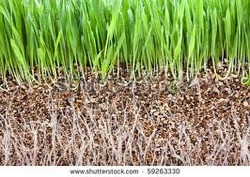
Deep roots mean the plant (yes, grass is a plant) can get moisture a few inches down when the sun has cooked the moisture off the top few inches. Would you plant flowers in a pot only 3 inches deep? NO! So why let your landscaper rip off that 3 or 4 inches only to replace it with the same? Many landscapers lack the proper equipment to install a good lawn. We use soil conditioners to remove only the turf and leave the soil. Then we work in compost rich soil to amend the existing soil. We add depth to the existing soil then fluff, so to speak, the soil we've added before we seed it. This makes it much easier for the grass to grow. Many landscapers install the loam then compact it with the equipment they use to spread it. This makes it very difficult for the new little seedlings to push down thru the loam to root.
Do you really need $75,000.00 of equipment to properly install a lawn?
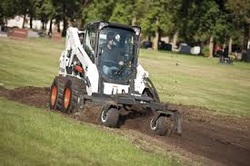
Yup. First we use a soil conditioner mounted on a skid steer.
This breaks up the soil and separates the old bits of grass and roots leaving your soil. It also grades, or levels, the lawn areas. It can also be used to blend compost with the soil. It uses a drum with many pointed teeth spinning very fast over the soil. Nothing can survive this thing!
This breaks up the soil and separates the old bits of grass and roots leaving your soil. It also grades, or levels, the lawn areas. It can also be used to blend compost with the soil. It uses a drum with many pointed teeth spinning very fast over the soil. Nothing can survive this thing!

The next step is choosing good quality loam and spreading it over the newly worked area. Good quality loam will not be cheap. Lots of times the loam that the landscaper took off the lawns last year will be spread on the new lawns he does this year. Yeah, that lawn across town that couldn't grow grass will suddenly start growing grass at your house? We buy good loam that has a high organic content. We carefully spread it on your lawn giving you a good DEEP growing surface.
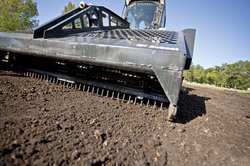
The landscape rake. This thing takes a lot of the work out of raking by hand. It separates rocks or debris from the loam. It also further tills the soil thereby improving the characteristics of the soil and making a much nicer bed for the seed. A nice level lawn is the object we are trying to achieve.
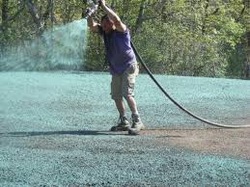
It's green but it ain't grass yet. This is where the rubber meets the road. Maybe that's not the best way to put it. This is where the grass seed meets the soil. Much better. We use a blend of water, seed, fertilizer, seed starter, lime, paper and wood fibers in our hydroseeder. This is an awesome way to seed a lawn. The paper and wood fibers will decompose pretty quickly but before they do they bind all those nutrients together with the seed in a nice little package that will hold moisture. The seed will need to stay damp to germinate.

Irrigation. Ya gotta keep it watered during germination. This is so much easier with irrigation. We install and maintain irrigation in Amherst, Bedford, Hollis, Merrimack, Nashua, Milford and Brookline NH. Call us for a free estimate. It's so much easier to set a timer to water instead of dragging a hose around!
This is what we're shooting for, a nice lawn. Then there's the aftercare, but that's another blog!

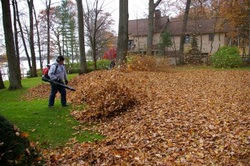
 RSS Feed
RSS Feed
